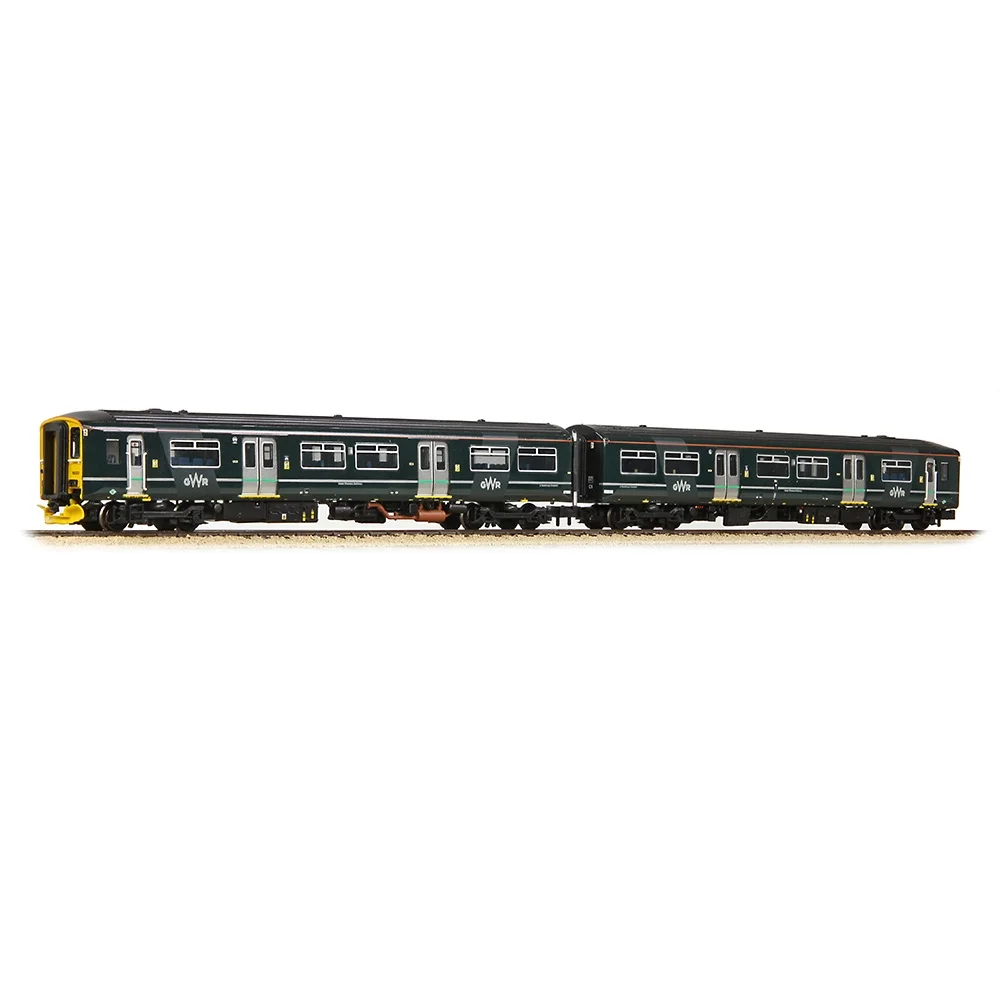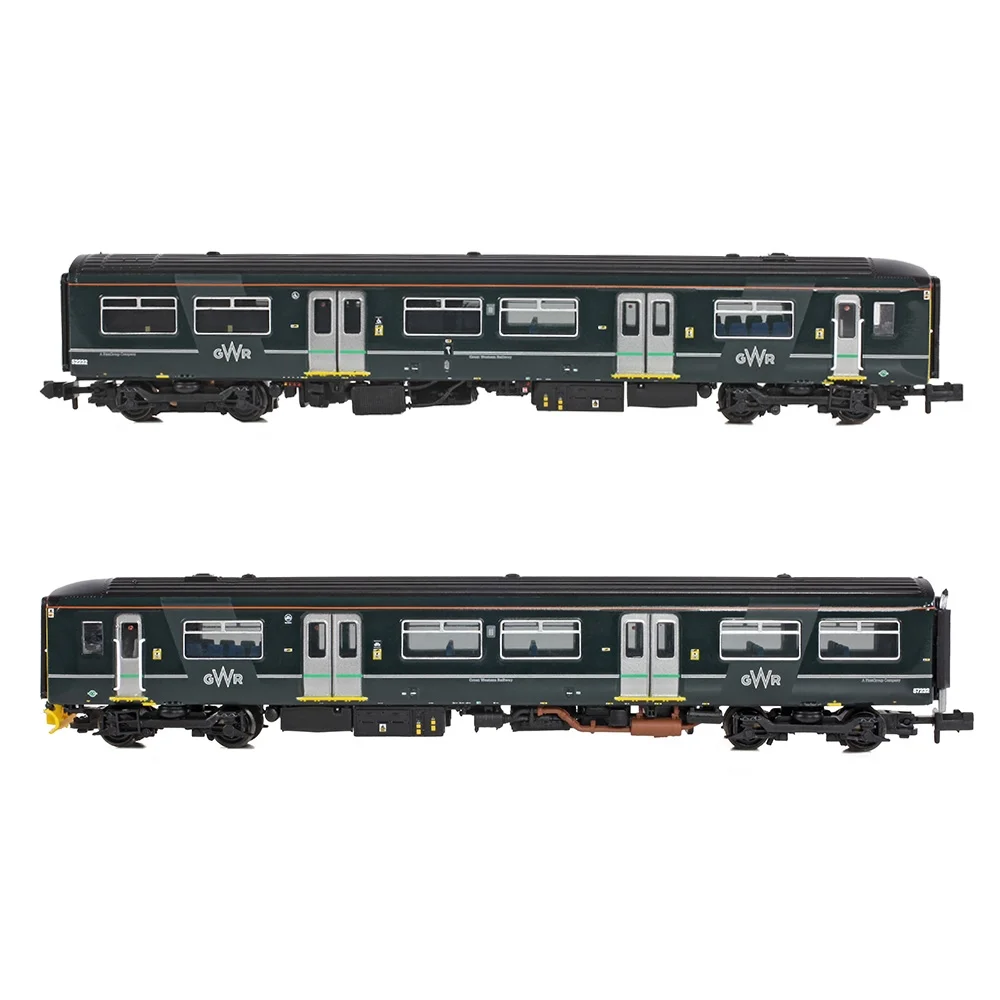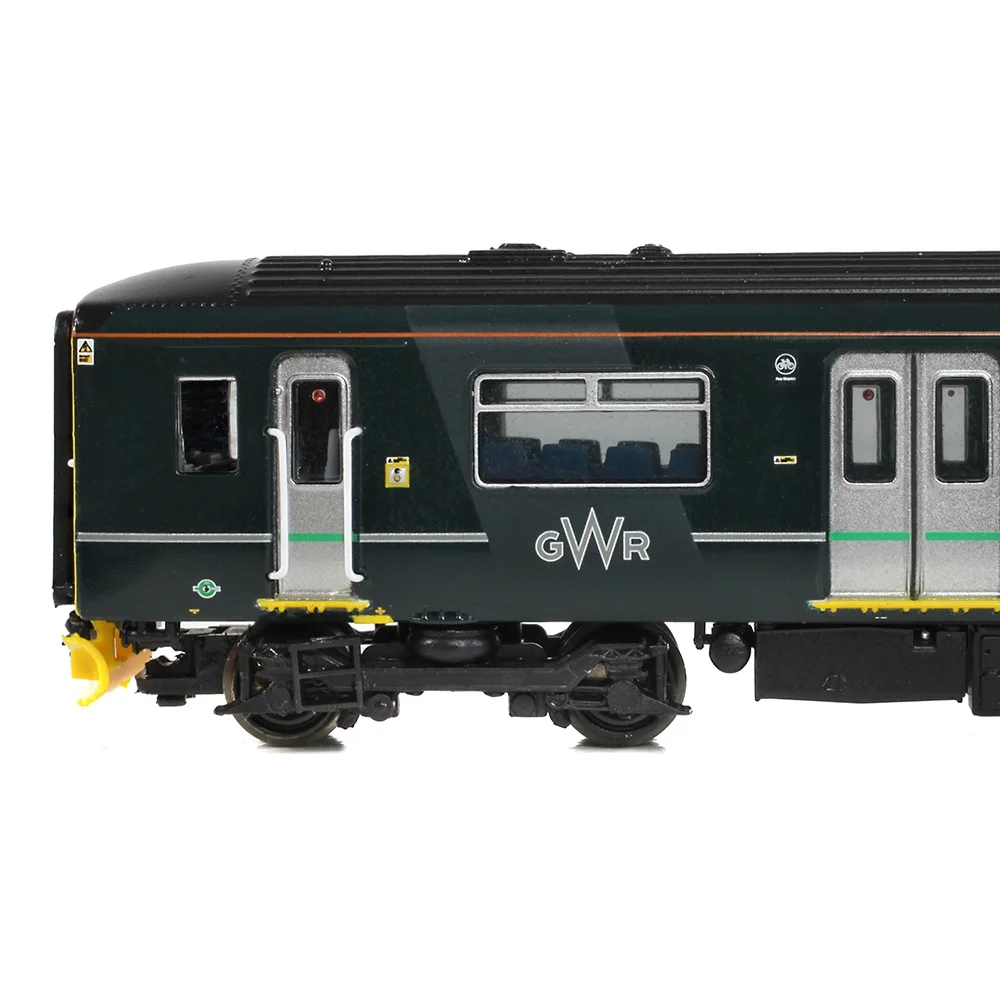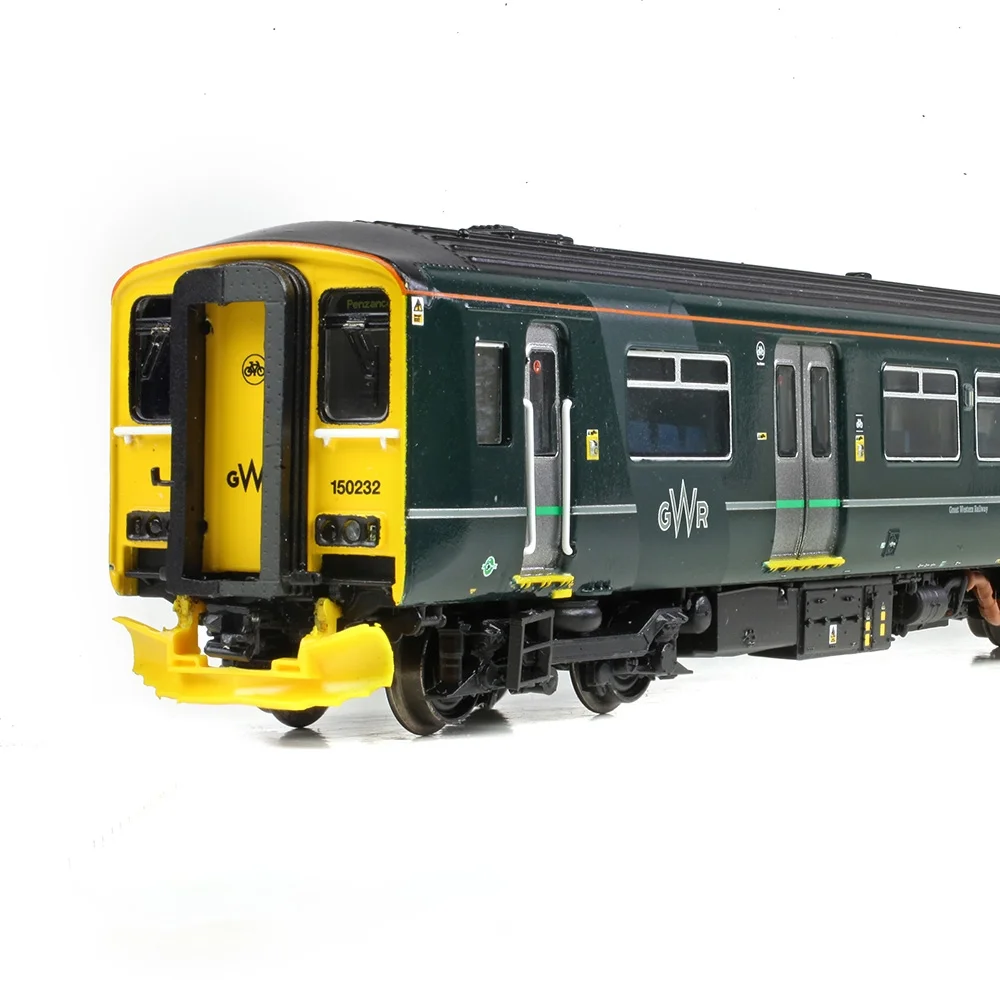Graham Farish 371-337SF
British Rail Class 150/2 150232 Great Western Railway (FirstGroup) Green
Graham Farish's Description & Specifications
In 2019, Bachmann upgraded the Graham Farish Class 150 DMU tooling to include provision for sound fitting, marking the first time SOUND FITTED versions became available for this class. The upgrade featured an enhanced chassis design to accommodate sound equipment, with all models now factory-fitted with speakers - even non-sound versions to assist modellers wishing to fit their own decoders.
SOUND FITTED models offer synchronized sound effects on both analogue (DC) and DCC control systems, providing authentic audio straight from the box. This upgrade maintained the existing 6-pin DCC interface while adding the new sound capabilities, ensuring compatibility with the established Class 150 range while bringing the models up to modern sound-equipped standards.
The 2019 announcement included both upgraded existing liveries and new variants, continuing the model's availability in multiple operator schemes whilst offering modellers the choice between sound-fitted and traditional versions.
The Class 150 Diesel Multiple Unit (DMU) is an enduring design, first introduced in 1984 much of the fleet remains in service today with operators including GWR FirstGroup. The striking green livery of GWR adorns the Graham Farish Class 150 DMU for the first time and we’ve selected 150/2 No. 150232 as the subject for this sublime N Scale model. The 150/2 sub-class is characterised by the gangway doors fitted to the cab ends, allowing two or more units to work in multiple whilst allowing access from one unit to another.
Constructed from a highly detailed bodyshell which is adorned with separate components like the cab front handrails, gangway connectors and exhaust, the Graham Farish model replicates the Class 150/2 faithfully. The chassis boasts a suite of parts to depict the engine, drive train, electrical gear and auxiliary equipment, while inside the model, passenger seating is included along with cab detail. The livery application, using authentic colours and accurate typefaces and logos just enhances the model’s good looks, while the powerful and smooth drive mechanism and plug and play DCC compatibility makes the Class 150 DMU the perfect addition to any modern N scale collection.
- Graham Farish N Scale
- Era 9
- Pristine GWR Green (FirstGroup) livery
- Running No. 150232
- Comprises Car Nos. 52232 and 57232
- Destination Blinds for Penzance
- Accessory Pack
- NEM Coupling Pockets
- Powerful 3 Pole Motor with Flywheel
- Interior Detailing
- Directional Lighting
- SOUND FITTED – Fitted with a Zimo MX649N DCC Sound Decoder (and a Zimo MX671N DCC Decoder in the trailer vehicle)
- Length 290mm
Class & Prototype
- Class: British Rail Class 150/2
- Traction: Diesel Multiple Unit
- Built: 1986-1987
- Total Built: -
- Running Number: 150232
The BR Class 150 Sprinter pioneered the second-generation DMU revolution that transformed British regional railways from 1984. Built by BREL York, 137 units introduced Mark 3 coach technology, Cummins diesel engines, and modern passenger amenities to replace aging heritage DMUs. Featuring unique 1/3 and 2/3 door positioning and 75mph capability, they served extensively across Great Britain on suburban and branch line services. Still operated by Great Western Railway, Northern, West Midlands Trains, and Transport for Wales after four decades, with unit 150231 achieving preservation status at Mid Hants Railway in 2025. Available as detailed models from Bachmann (OO) and Graham Farish (N gauge) in multiple liveries spanning their extensive operational history.
Operator & Livery
- Operator: Great Western Railway (FirstGroup)
- Livery: Green
- Era: 9 - Privatisation
The contemporary Great Western Railway, owned by FirstGroup since 1998, operates Britain's flagship rail franchise connecting London Paddington to the West Country, Wales, and Cotswolds. Serving over 100 million passengers annually, GWR deliberately adopted the historic railway's name and green livery in 2015 to honour Brunel's legacy. The company operates state-of-the-art Hitachi Intercity Express Trains with bi-mode electric-diesel capability alongside traditional diesel multiple units on rural branches. The £7.5 billion fleet modernisation programme, combined with Great Western Main Line electrification, transformed passenger services while maintaining the heritage appeal that makes GWR popular among railway modellers. Current franchise operates until 2028 before likely transition to public ownership.
The modern Great Western Railway green livery, introduced on 20 September 2015, represents a carefully designed tribute to the heritage of Brunel's original Great Western Railway whilst meeting contemporary branding requirements. The livery features a dark green base colour inspired by the original "dark holly green" used on the first GWR locomotives from the 1830s, though specifically developed as a bespoke modern paint formulation.
The design incorporates distinctive white stripes running along the train sides, complemented by grey doors and contemporary GWR roundel branding. This colour scheme replaced FirstGroup's previous "Dynamic Lines" livery of purple, pink and gold that had characterised First Great Western services since 2006. The green livery was developed by design agency Pentagram as part of a comprehensive £7.5 billion rebranding exercise accompanying the introduction of new Intercity Express Trains and infrastructure modernisation.
The livery application extends beyond rolling stock to encompass station signage, staff uniforms, and corporate materials, creating a cohesive visual identity that consciously evokes railway heritage whilst maintaining modern functionality. Electric green, silver, and black serve as accent colours, with the Glypha typeface selected for optimal legibility in transport applications.
For railway modellers, the heritage green approximates to Humbrol 117 US Light Green or similar commercial paint matches, though the exact shade remains proprietary to GWR. The livery has been successfully applied across the diverse fleet including Class 800/802 Intercity Express Trains, Class 387 Electrostars, and various diesel multiple units, creating the distinctive green-liveried railway that defines contemporary GWR operations.



